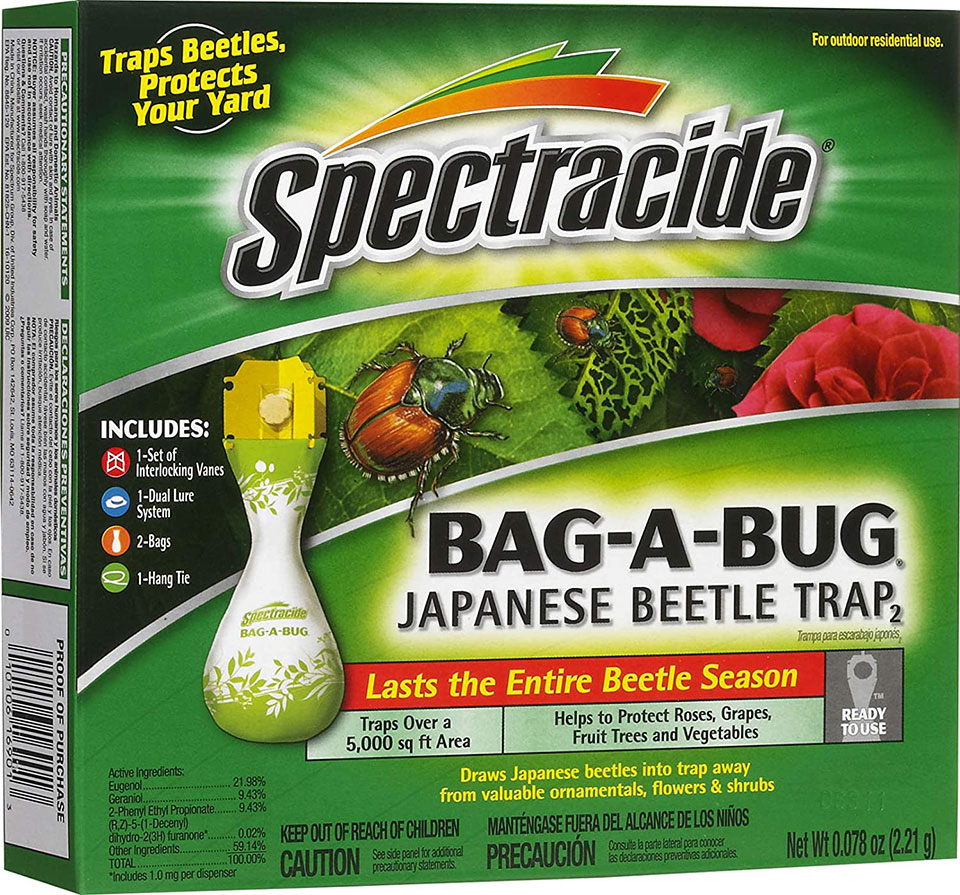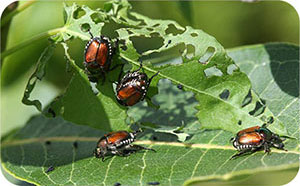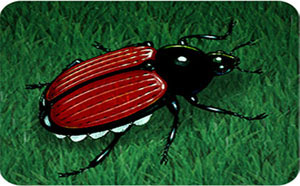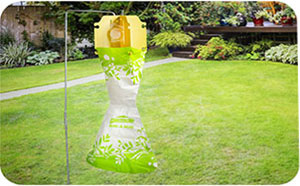
Japanese Beetles are destructive pests that can cause extensive damage to a wide range of ornamental and edible plants in the lawn and garden. Plus their larvae burrow through the soil where they cause even more damage feeding on lawn grass roots. Use of the Japanese beetle’s natural sex attractant for trapping is an ideal method to aid in the control of the insect through its own natural biology. It provides a means compatible with the environment and also helps avoid the indiscriminate use of harmful chemicals. The natural sex attractant, when used together with a proven floral lure, can attract from two to five times as many beetles as the commonly available floral lure alone.
- Traps over a 5,000 sq ft area.
- Lasts the entire beetle season.
- Dual lure system.
- Contains 1 lure, 1 set of interlocking vanes, 2 bagss and hang tie.
- Restricted In: AK, AZ, CA, CO, HI, ID, MT, NM, NV, OR, PR, TX, UT, WA, WY.
 How do you know if you have Japanese beetle damage?
How do you know if you have Japanese beetle damage?
Japanese beetles leave telltale signs – here’s how to tell if you need to take action with Spectracide Bag-A-Bug Japanese Beetle Trap:
- Leaves are lacy and skeletonized, with only the veins remaining
- Trees that are severely infested may have a scorched appearance
- Adult Japanese beetles are visibly flying around plants – they’re daytime feeders and most active when it’s warm and sunny
 Japanese beetle biology
Japanese beetle biology
Japanese beetles are highly social, voracious eaters that are in tune with chemical cues in the environment. A receptive female releases a pheromone that can attract males from far distances, and it’s not uncommon to see large clusters of male beetles vying for a single female in the center. Certain flowers – roses in particular – can also be powerful attractants. Japanese beetles will burrow into these flowers, eating along the way.
The dual-action lure in Spectracide Bag-A-Bug Japanese Beetle Trap plays on these chemical cues, utilizing oral and pheromone scents to attract Japanese beetles by the hundreds.
 Ideal placement of Spectracide Bag-A-Bug Japanese Beetle Trap
Ideal placement of Spectracide Bag-A-Bug Japanese Beetle Trap
- For best results, place the trap downwind of foliage to intercept beetles heading toward plants (30 ft from susceptible plants is an ideal distance). Placing the trap in or near foliage could attract more beetles to these areas.
- Hang the trap at the correct beetle flight height (the bag should be at least 1 foot off of the ground) – suspending from a post, fencing or stake works well.
- The trap should be free to move in the wind without obstruction, and it should be out of reach of small children.
- The free-standing Spectracide Bag-A-Bug KwikStand places the lure at the ideal height, and it’s movable to keep your trap downwind of foliage.